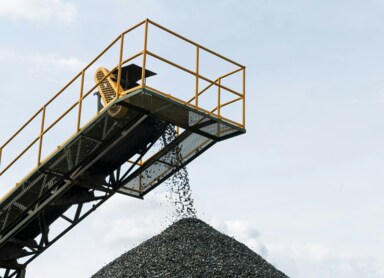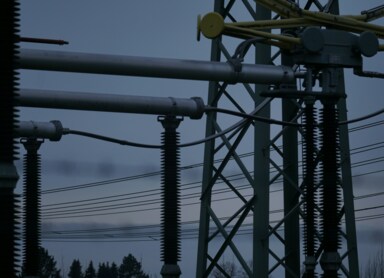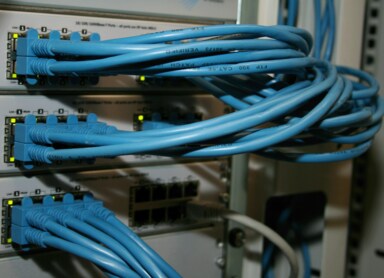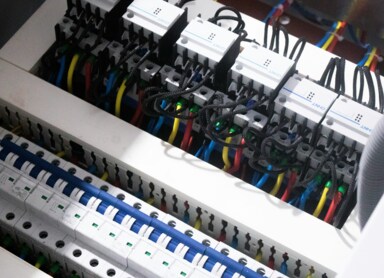How does a nuclear power plant work? We explain
Nuclear energy is currently regarded as the future of developing societies. Extremely efficient and environmentally safe, it allows for the generation of a tremendous amount of electric power, albeit at a fairly high cost. Learn about the principles of how a nuclear power plant works and find out what plans Poland has in this regard.
How does a nuclear power plant work?
The key component of every nuclear power plant is the reactor. Depending on the type of fission reaction, nuclear reactors are classified as thermal, epithermal, or fast. One of the most commonly used types is the PWR (Pressurized Water Reactor). Its operation can be explained in a few steps:
-
During the fission of atomic nuclei, large amounts of heat are released and absorbed by a working fluid—usually water under high pressure. The atomic nucleus splits into lighter fragments, and the released neutrons trigger further fission reactions.
-
The primary circuit water flows into a steam generator, where it transfers heat to the secondary circuit water (at lower pressure) and then returns to the reactor.
-
The steam from the secondary circuit is dried and directed to a turbine, which it drives.
-
The turbine is connected to an electric generator, which produces electricity.
From a technical perspective, it is therefore the turbine, not the nuclear reaction itself, that generates the electricity. Nevertheless, the fission process is essential to maintain the high efficiency of the system.
For PWR reactors, the typical fuel is the uranium-235 isotope (U-235), usually in the form of uranium dioxide. Physically, the fuel is shaped into small pellets sealed in cladding tubes to form fuel rods, which are grouped into assemblies of about 250 rods each. A reactor typically requires around 200 such assemblies to operate.
Nuclear power in Poland – history and plans
At present, Poland has no operating nuclear power plants, although the first plans date back to the early 1970s. At that time, the governments of the People’s Republic of Poland (PRL) and the Soviet Union signed an agreement to cooperate on building a nuclear reactor in Żarnowiec. However, in 1990, despite significant construction progress, the decision was made to abandon the project.
For many years, nuclear energy was largely absent from Poland’s energy policy. A breakthrough came in 2005, when the government adopted the Polish Energy Policy until 2025, recognizing the need to utilize nuclear potential. The latest strategy, Polish Energy Policy 2040 (PEP2040), calls for the construction of six reactor units.
The first unit of the country’s first nuclear power plant is scheduled to start operation in 2033, with subsequent units coming online every 2–3 years.
Because Poland lacks prior practical experience in nuclear energy, the process requires extensive administrative and legal preparations, workforce training, as well as the development of cybersecurity and financing frameworks. This makes the project both time-consuming and costly.
Location of Poland’s first nuclear power plant
The first plant is planned for the coastal municipality of Choczewo (Lubiatowo-Kopalino site). The decision was not easy: more than 90 potential locations were analyzed in detail, considering land suitability, access to cooling water, infrastructure expansion possibilities, and proximity to protected natural areas.
Timeline for Poland’s first nuclear power plant
As of now, the project is still in its early stages. In September 2023, the government obtained an environmental decision, a key step toward construction. Nevertheless, numerous formalities remain before actual building can begin.
The goal is to launch the first plant in 2033, provided the PEP2040 milestones are met on schedule.
Second nuclear power plant – location and schedule
Poland also plans to build a second nuclear power plant. Its exact location has not yet been finalized, but according to the Ministry of Industry, it is likely to be in Konin, located in central Poland.
The combined capacity of both plants is expected to reach around 9 GW (likely a typo in some reports that mention “9 MW”).
The entire infrastructure will be managed by the state-owned company Polskie Elektrownie Jądrowe S.A.
While the first plant will be built by the U.S. company Westinghouse Electric Company, the second project will probably be entrusted to Japanese contractors. A preliminary memorandum of understanding was signed at the end of last year, and discussions are ongoing about a joint venture involving companies such as Hitachi, ICHI, and Eneos Holdings.
Cost of building a nuclear power plant
The Polish government estimates the cost of building a single nuclear power plant at around 150 billion PLN. Of this amount:
- 115 billion PLN is expected to cover technical work, including construction and technology implementation.
- The remaining 35 billion PLN will go toward accompanying investments and operating costs.
The final cost will only be known after the plant is completed.
When compared to other energy sources, nuclear energy is expensive:
- The cost per megawatt of nuclear capacity can reach 43 million PLN,
- Coal-fired energy costs between 4.6 and 13 million PLN per MW,
- Natural gas plants are even cheaper, at around 3.5 million PLN per MW.
Another factor is the long construction time. While gas plants can be built in 2–4 years, nuclear infrastructure often requires over a decade. For example, Finland’s Olkiluoto 3 plant took 17 years to complete instead of the planned few years. Delays can result from even minor design errors, material shortages, or political disputes. Local communities also continue to debate the risks of nuclear energy.
Is nuclear energy the future of Poland?
Debate over whether Poland needs nuclear power continues, but it is undeniable that most economically significant countries already use nuclear energy.
A domestic nuclear power program would provide:
- Greater energy security for citizens,
- Stable electricity prices,
- High-skilled job opportunities.
Unlike coal plants, nuclear power plants do not deplete or pollute the environment, making them a cleaner alternative. Modern reactors are considered very safe, and with today’s technology, the likelihood of a disaster similar to Chernobyl is extremely low.
Modern nuclear power plants can operate for 60 years, and with proper maintenance, even up to 80 years, while maintaining high efficiency. For businesses committed to ESG goals, signing PPA agreements for sustainable energy supply could be a milestone in their development.
All signs indicate that nuclear energy is not only the future of Poland but also of the entire world.






